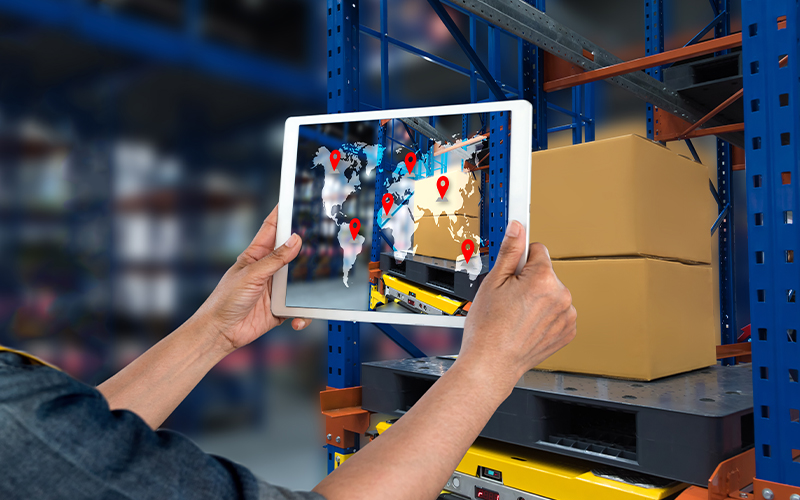When digital technologies, including cloud-based platforms, artificial intelligence (AI), advanced analytics, or automation, are used to digitize, automate, and optimize the end-to-end procurement process for any enterprise, the procurement division in that business is deemed ‘digital’. Digital procurement encompasses a gamut of activities from sourcing and contracting goods, services and people, to supplier management and spend analysis. The function has effectively moved beyond older manual or semi-automated methods like email and spreadsheets to the newest technologies to deliver efficiencies, transparency, and enhanced decision-making.
Previously, procurement was typically tactical and rooted in manual, paper-based processes or at most used simple tools such as email and spreadsheets. Even about a decade or two ago, the focus of the procurement division would mainly be reducing costs, with secondary goals such as ensuring compliance and processing transactions.
Today, digital procurement is a vastly different function. It has moved out of the siloed back office and become:
- Strategic and data-driven, enabling spend visibility and predictive insights
- Automated, using AI for routine tasks like e-sourcing as well as for more complex ones such as supplier risk assessment, and contract management
- Highly collaborative, due to the many cloud-based tools that procurement teams leverage to enhance supplier and stakeholder engagement.
Overall, the procurement function has effectively been integrated into the broader value chain and made its way into strategic business objectives.
This shift enables procurement to gain a seat at the strategy table and contribute to being a driver of value and innovation within the enterprise, rather than being just a cost center. Procurement has, in fact, become a driver for business growth, as a secret weapon for resilience and agility. Procurement teams have become organizational leaders in sustainability initiatives, leading green procurement efforts to meet Environmental, Social and Governance (ESG) goals. In many organizations, Procurement groups have been enabling digital transformation across supply and sourcing. They typically act as a value orchestrator by aligning with business units and championing innovation.
Today, procurement is often expected to play a key role not just in cost containment but also in influencing top-line value, building supplier collaboration paths, and providing key competitive differentiation.
pathways to procurement success
Modern-day procurement groups need critical capabilities to succeed in the hyperdynamic post-pandemic marketplace. These include:
- Technology and data skills – the ability to harness the latest analytics, data quality and AI tools to serve the organization
- Agility and resilience – to anticipate, plan for, and respond to the unexpected, which may vary from disruptions and supply chain issues due to geopolitical shocks to natural disasters wrought by climate change
- Supplier collaboration skills and supplier strategy management
- Talent acquisition and management skills to build a robust, digitally savvy and forward-looking organization
- Deep ESG and sustainability expertise, including activities such as spend analysis to meet sustainable goals, to ensure procurement policies and practices go beyond paying lip service to sustainability, and to be able to showcase actual impact data.
Business acumen and technology skills are undoubtedly at the top of this stack of procurement personnel capabilities.
Procurement divisions are not without their own unique challenges. These include a lack of talent, especially in key digital and analytical capabilities. In a key report, Gartner states that only 14% of procurement leaders feel confident of having adequate talent to meet the future needs of their divisions. Other challenges reported by procurement leaders include budget and resource constraints, navigating competing business priorities among cost, risk and quality, as well as sustainability; data quality issues and having to deal with outdated systems.
future outlook
Looking ahead, what is in store for procurement divisions? Like most other divisions of the modern enterprise, the path to the future is laden with technology integration and digital transformation. AI and automation are expected to become deeply embedded in the organization, freeing up human resources for higher-order value addition (which makes acquiring the right talent all the more important). Procurement will fully integrate into the strategic value creation and innovation agendas of the overall business, going well beyond the cost containment mandates of yore. Sustainability and ESG are set to be core mandates for procurement divisions as Sustainability Development Goals (SDGs) percolate through governments and corporations the world over.
Finally, it’s all about data – the procurement division will only be as good as the data it handles. As real-time data-driven decision making and end-to-end supply chain visibility become vital, procurement divisions must focus on improving their data quality to serve these objectives.
Organizations that lag in any of these areas – whether technology adoption, talent pipeline building, data quality improvement or supplier collaborations – stand to lose a critical competitive advantage. Procurement is a linchpin for the modern digital, sustainable, resilient business and the heart of growth strategies.
how Infosys BPM can help
As a system integrator of choice for Fortune 500 global companies, Infosys BPM offers a range of procurement-focused business solutions that automate data ingestion and data management activities, and optimize procurement management. From office consumables to fleet management, and logistics to insurance claims, Infosys’ end-to-end category management outsourcing services operate effectively across a wide range of verticals, supporting procurement divisions in meeting their strategic objectives.







